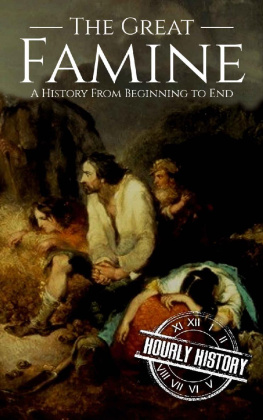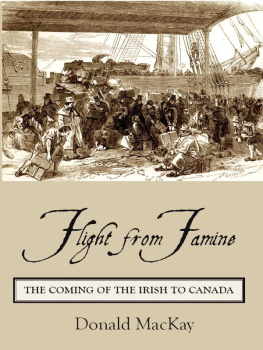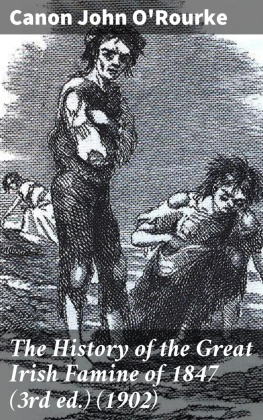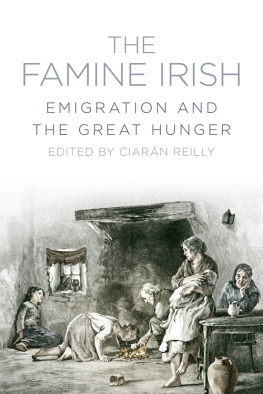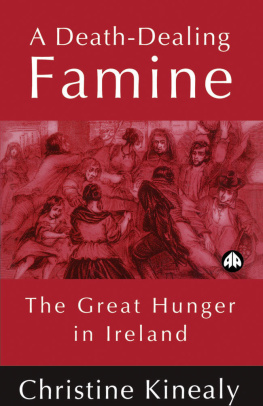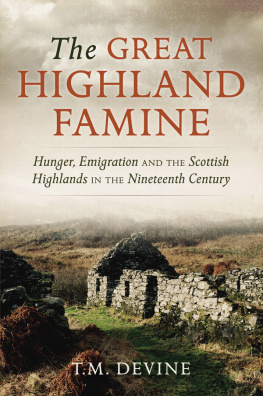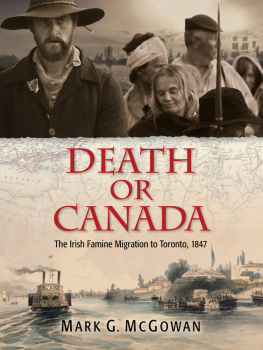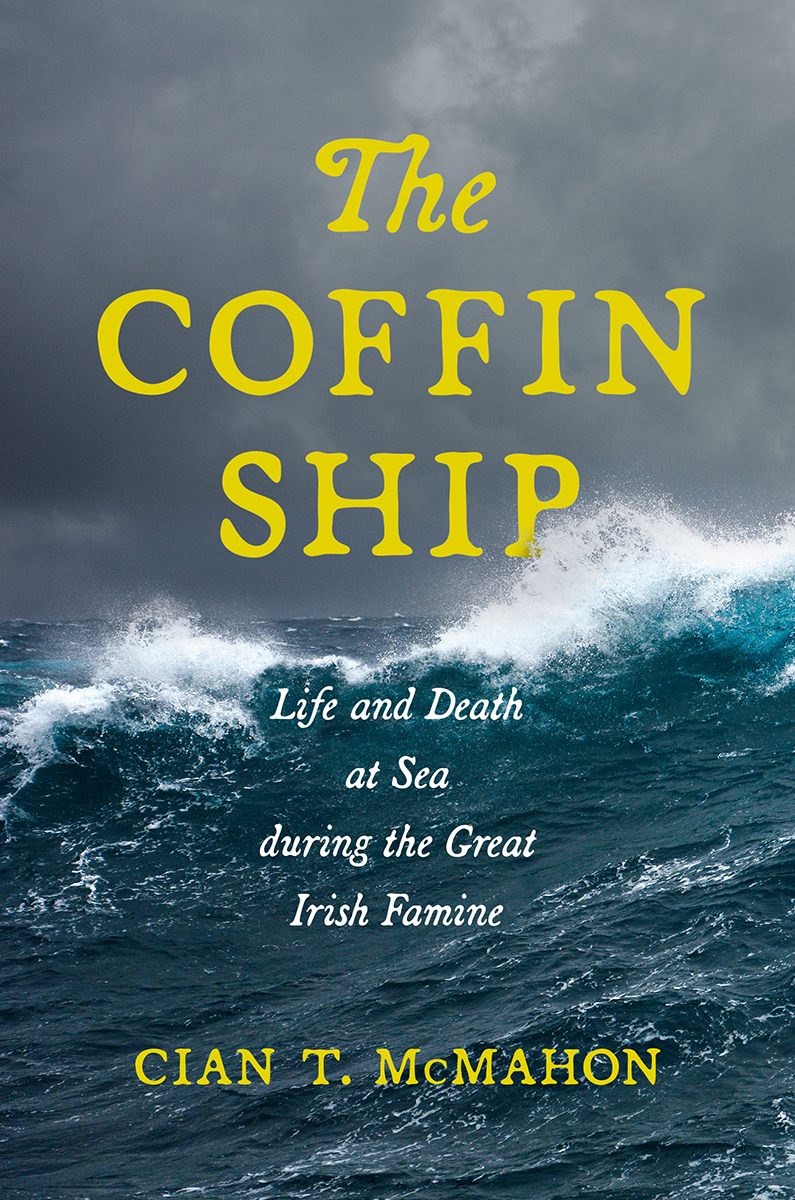
The Coffin Ship
In the Glucksman Irish Diaspora Series
Edited by Kevin Kenny
Associate Editor Miriam Nyhan Grey
America and the Making of an Independent Ireland: A History
Francis M. Carroll
The Coffin Ship: Life and Death at Sea during the Great Irish Famine
Cian T. McMahon
The Coffin Ship
Life and Death at Sea during the Great Irish Famine
Cian T. McMahon

NEW YORK UNIVERSITY PRESS
New York
NEW YORK UNIVERSITY PRESS
New York
www.nyupress.org
2021 by New York University
All rights reserved
References to Internet websites (URLs) were accurate at the time of writing. Neither the author nor New York University Press is responsible for URLs that may have expired or changed since the manuscript was prepared.
Library of Congress Cataloging-in-Publication Data
Names: McMahon, Cian T., author.
Title: The coffin ship : life and death at sea during the Great Irish Famine / Cian T. McMahon.
Other titles: Life and death at sea during the Great Irish Famine
Description: New York : NYU Press, 2021. | Series: The Glucksman Irish diaspora series | Includes bibliographical references and index.
Identifiers: LCCN 2020040679 (print) | LCCN 2020040680 (ebook) | ISBN 9781479808762 (hardback) | ISBN 9781479808793 (ebook) | ISBN 9781479808809 (ebook)
Subjects: LCSH : IrelandHistoryFamine, 18451852. | IrelandEmigration and immigrationHistory19th century. | ImmigrantsCorrespondence. | Passenger shipsGreat BritainHistory19th century. | ImmigrantsHistory19th century. | IrishForeign countriesHistory19th century. | Ocean travelHistory19th century. | Seafaring life. Classification: LCC DA950.7 .M39 2021 (print) | LCC DA950.7 (ebook) | DDC 304.809415/09034dc23
LC record available at https://lccn.loc.gov/2020040679
LC ebook record available at https://lccn.loc.gov/2020040680
New York University Press books are printed on acid-free paper, and their binding materials are chosen for strength and durability. We strive to use environmentally responsible suppliers and materials to the greatest extent possible in publishing our books.
Manufactured in the United States of America
10 9 8 7 6 5 4 3 2 1
Also available as an ebook
This book is affectionately dedicated to my late mentor and friend,
Professor David W. Miller
I saw my life and I walked out to it
as a seaman walks out alone at night from
his house down to the port with his bundled
belongings, and sails into the dark.
Desmond OGrady, Purpose (1996)
Contents
In his colorful history of the KennedysIrish Americas first familyJohn H. Davis imaginatively reconstructed the probable shipboard experiences of JFKs great-grandparents, who sailed on an emigrant ship from New Ross to Boston during the Great Famine. Life below deck, where the emigrants were quartered, was dark and dangerous. The sick vomited and moaned, women shrieked in childbirth, and men fought over a few inches of bunk or an insult to a county of origin, wrote Davis. Rape was a common occurrence as crew members regularly molested female passengers during storms. Worst of all, death ran rampant in these vessels, leaving only one in three passengers to survive the ordeal. Coffin ships, these were called, Davis claimed, and indeed the only coffins the dead had were the ships they died in.
This one-dimensional portrait of Famine-era emigrant vessels as coffin ships has long overshadowed any hope for a true understanding of the voyage. When we use the actual words of the emigrants themselves to scratch its surface, however, we get a much more complicated but clearer picture of what life was actually like. In the autumn of 1847, when shipboard mortality was at historically high levels, Thomas McGinity emigrated with his son from Ireland to New York. Soon after arriving, he penned a letter to his loved ones back home to let them know they had arrived. That note sits, along with hundreds of other emigrant letters, in Belfasts Public Record Office of Northern Ireland. I take this favorable opportunity of writing to youse to let youse know that I and John arrived safely, thank God, after a passage of thirty days, wrote Thomas. I never had better health than that which I had at sea. Of course, McGinity ought not to be taken as representative of all emigrants who sailed from Ireland in 1847 (or any other year) for there were many who suffered and died. But his letter is significant because it offers us an intriguing new angle on the strange and complicated story of the Great Famine exodus. And it begs an important question: what would happen if we used the words and experiences of the Irish emigrants themselves to re-create, and thus more fully understand, that epic moment in modern history?
We need this kind of fresh perspective because historians have long ignored the sea journey, treating it as little more than a brief interlude in the grand drama of human migration. This is particularly true of those who study Irelands Great Famine. The miserable epic of the Atlantic crossing in these years has been told so often and well that it hardly seems necessary to recount its dreadful details, explained historian Robert Scally in 1995. Flanked by the scenes of Skibbereen and Grosse Isle at either end of the voyage, the coffin ship stands as the center panel of the famine triptych. Although most academic historians, including Scally, have long questioned the veracity of the proverbial coffin ship, their lack of a robust alternative has allowed a range of ahistorical elisions and distortions to survive. It is still often assumed, for example, that the term coffin ships originated during the Famine. In fact, the phrase predated the 1840s, was barely mentioned during the Famine, and became popular among Irish nationalists only in the early 1880s as a rhetorical weapon with which to combat landlords and British misgovernment during the Land War. The notion of the coffin ship also limits the story of Irelands Famine migration to a primarily transatlantic one, thus crowding out the smaller but important streams of people (including transported convicts) who traveled to Britain and Australia between 1845 and 1855. Perhaps most importantly, the picture of Irish emigrants as trapped in coffins has stripped them of their liveliness, creativity, and agency. I have titled this book The Coffin Ship, therefore, precisely as a way to open up and then challenge the accepted truisms that have limited a fuller understanding of not only Irish migration during the Famine but also human migration more broadly. The emigrant voyage began long before ones ship set sail and lasted beyond that first sight of land. My goal in this book is to rescue that process from its historical obscurity and thus resituate the sailing ship, alongside the tenement and the weekly newspaper, as a dynamic element of migration history.
Using letters, diaries, government documents, and newspapers scattered across archives and libraries on three continents, The Coffin Ship focuses on the lived experiences of the migrants themselves. My original goal was to identify and understand the strategies that Famine-era Irish emigrants used to survive crossing the Atlantic Ocean. Given that folks who were headed to Britain and Australia employed many of same tactics used by their friends and families en route to Canada and the United States, however, it soon became clear that maintaining strict distinctions between migratory streams to the northern and southern hemispheres would only hamper the projects full potential. Nationalist politician John OConnells 1854 demand that emigrant vessels be at least as seaworthy as convict ships points to another important factor: that those Irish who sailed on convict transports (many of whom did so voluntarily) constituted another trickle in the flood of migrants during this time period. At a broader level, it also became apparent to me that the weeks or months one spent on a ship were only part of the journey. A nineteenth-century sea voyage was actually a long process, which began with the collection of resources to leave and ended as one started to settle in ones host community. At every step of the way, migrants relied on local and international networks of communication and exchange. This books core argument, therefore, holds that the migratory process was not merely about enabling individuals to move here or there. In fact, by encouraging the transnational exchange of money, tickets, advice, and news, the voyage itself fostered the development of countless new threads in the worldwide web of the Irish diaspora.


